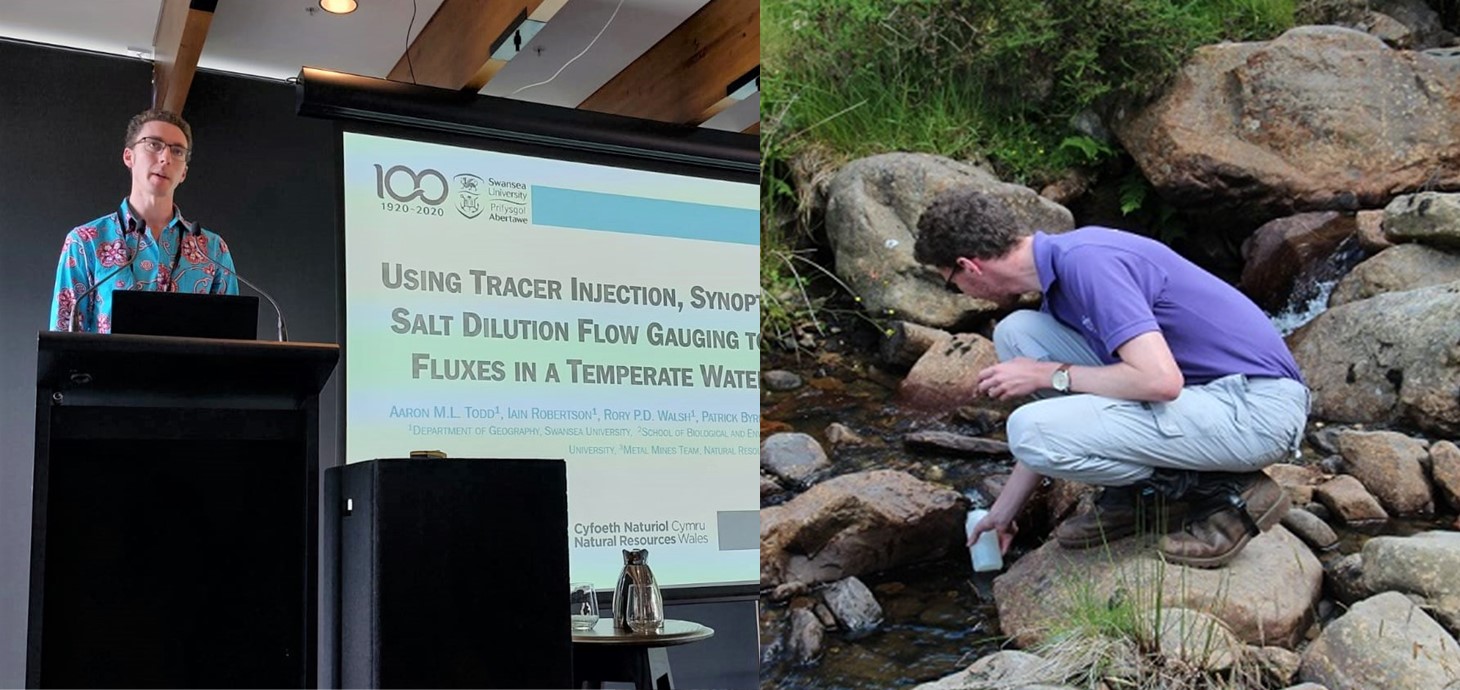
Aaron Todd taking water samples from a stream, and giving his prize-winning conference presentation
A Swansea expert has been awarded first prize at a prestigious international conference for his research on tackling river pollution from disused mines.
Aaron Todd from the geography department is carrying out a PhD on river management and salt dilution flow gauging, a technique for quickly and easily estimating the flow of a small stream.
He has been conducting his fieldwork at Nantymwyn lead mine in Carmarthenshire, which was abandoned in 1932. Aaron’s research helps monitor pollution from the mine flowing into the Towy river and estuary.
He recently presented his research to fellow experts at the International Mine Water Association Conference in New Zealand. His presentation was awarded first prize, which came with a £1500 bursary. Aaron also gave a second presentation on behalf of his fellow PhD researcher Stuart Cairns.
Aaron Todd explained:
“I’ve used a variety of methods to assess the flows of water and resultant pollution across the Nantymwyn site, including salt dilution flow gauging, which I recently used and taught in the Philippines. I also use synoptic sampling and tracer injection, which, while reasonably common in the US, remains fairly rare in the UK.
Stuart Cairns’s research has been looking at the use of biochar – burned organic material - to remove contaminants from a variety of impacted waters, such as motorway run off. He and I trialled its use at two metal mines: first at Nantymwyn and subsequently at Parys Mountain in Anglesey, which is what I spoke about at the conference. We found that the biochar can remove over 90% of the metals of concern in just a minute, which is a very promising result.”
Pete Stanley, Abandoned Mines Senior Specialist Advisor at Natural Resources Wales, which part-sponsors Aaron’s research, said:
“Aaron's research at Nant y Mwyn has helped bring greater clarity on the polluting pressures present. This has enabled flow gauging stations to be installed at key point sources which, when combined with wider diffuse sources, steers ongoing feasibility and design of staged anti-pollution intervention works.
Nant y Mwyn has become a key site within the Metal Mine Programme as it is the principal polluting mine. Work here will improve a longer length of water body (in this case the Towy) than at any other Welsh mine.”
Sustainable Futures, Energy and the Environment - Swansea University research
